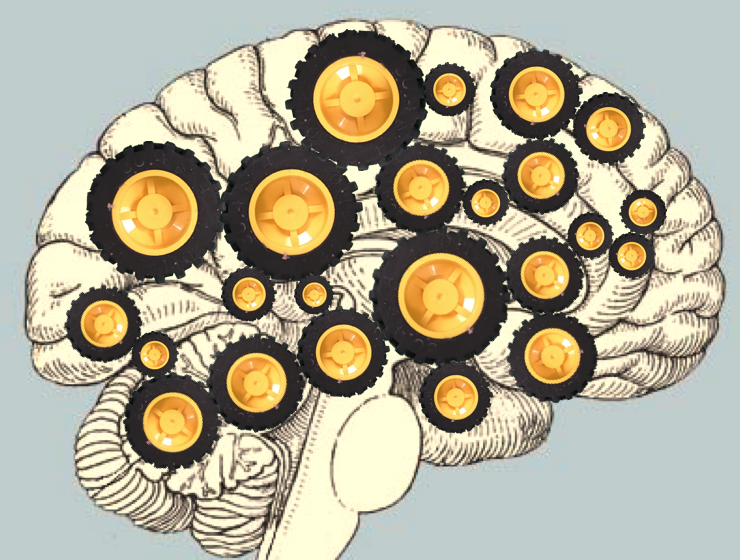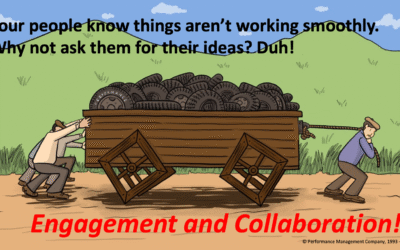Gary Marcus’ book Kluge is about the human brain and its workings.And I have been interested in how the brain works since my undergratuate days at Allegheny College working with Pete Elias and researching the learning of mice (1968) and especially into my doctoral work with Dick King at UNC-Chapel Hill. I actually think there is only modest improvement in some aspects of what we have learned about the brain since I graduated in 1977.
But we have come a long way… In ancient Greece, thinkers like Hippocrates and Aristotle grappled with the nature of the mind and its connection to the brain. While Hippocrates believed that the brain was the seat of intelligence and consciousness, Aristotle argued that the heart was the center of reason and emotion, with the brain serving merely as a cooling mechanism. We now know that the brain actually does have some impacts on thinking for most people. (grin)
I thought to share the AI book summary produced by Perplexity when I asked it to summarize the main ideas about how the brain evolved to produce this thing we can consciousness… I slightly edited the output. As Spock would say, “Fascinating.”

This is your brain rolling along on round wheels!
Introduction
In his thought-provoking book “Kluge,” cognitive scientist Gary Marcus challenges the widely held notion that the human mind is an elegantly designed, optimized system. Instead, he argues that our minds are better described as “kluges” – inelegant, makeshift solutions that have evolved through a haphazard process of tinkering and adaptation, rather than intelligent design
Marcus draws upon a wealth of evidence from various fields, including psychology, neuroscience, and evolutionary biology, to support his central thesis. By examining the quirks, inefficiencies, and limitations of our cognitive abilities, he paints a compelling picture of the mind as a remarkable yet imperfect product of natural selection.
The Concept of a Kluge
The term “kluge” originates from the engineering world, where it refers to a clumsy or inelegant solution that works despite its lack of design or planning. Marcus applies this concept to the human mind, asserting that our cognitive faculties have evolved through a series of ad hoc solutions, rather than being meticulously engineered from the ground up.
He argues that the mind is a patchwork of adaptations, each layer built upon the foundations of earlier mechanisms that were originally designed for different purposes. This evolutionary tinkering has resulted in a system that, while remarkably capable, is far from optimal or flawless. And there is a LOT of evidence to support this.
The Quirks and Flaws of the Human Mind
Throughout the book, Marcus presents numerous examples of the mind’s quirks and flaws, highlighting the ways in which our cognitive processes deviate from what one might expect from a perfectly designed system.
One of the most striking examples is our perception of color. Marcus explains that the human visual system is based on a relatively crude system of three types of color receptors, which can lead to optical illusions and difficulties in distinguishing certain shades. This limitation is a remnant of our evolutionary past, when our ancestors’ color vision was primarily geared towards detecting ripe fruits and other important environmental cues.
Marcus also delves into the various cognitive biases and heuristics that shape our decision-making processes. These mental shortcuts, while often useful, can also lead to systematic errors and irrational judgments. For instance, the confirmation bias – our tendency to seek out and favor information that confirms our existing beliefs – can lead us to make poor decisions by ignoring contradictory evidence.
Note: The works of the late Daniel Kahneman in his book, “Thinking Fast and Slow” are very interesting and lend credence into this Kluge approach to brain functioning. While we CAN make good discisions and demonstrate thinking skills, we generally tend to sub-optimize our effectiveness in part because of our inherited preferences. System One thinking is fast but often inaccurate, while System Two thinking tends to be much more systematic and consciousness about these patterns allows for improvement in results. (I want to blog on this later because I intend to include support for Kahneman’s ideas in my new Galapagos Guardians problem-solving, team-buiilding game.)
The Role of Evolution
A central theme in “Kluge” is the role of evolution in shaping the human mind. Marcus argues that our cognitive abilities have been shaped by the relentless process of natural selection, which favors traits that enhance survival and reproduction, even if those traits are not optimal or efficient in other contexts.
He illustrates this point with examples from various domains, such as language acquisition and social cognition. For instance, the ability to rapidly acquire language is a remarkable feat of the human mind, but it comes at the cost of certain limitations, such as the difficulty in learning new languages later in life.
Marcus also explores the concept of “evolutionary inertia,” which refers to the tendency of evolution to build upon existing structures and mechanisms, rather than starting from scratch. This process can lead to suboptimal solutions, as new adaptations are constrained by the limitations of earlier evolutionary steps.
The Implications of Being a Kluge
While acknowledging the remarkable capabilities of the human mind, Marcus argues that recognizing its kluge-like nature has important implications for how we understand ourselves and approach various challenges.
For instance, in the realm of education, Marcus suggests that acknowledging the mind’s limitations and biases could lead to more effective teaching methods that take into account our cognitive quirks and tendencies. Similarly, in the field of artificial intelligence, understanding the haphazard nature of the human mind could inform the development of more robust and flexible systems that mimic the adaptability of biological intelligence.
Marcus also explores the ethical and philosophical implications of being a kluge. If our minds are indeed the product of a haphazard evolutionary process, rather than intelligent design, it challenges certain religious and metaphysical beliefs about the nature of human consciousness and the existence of a divine creator.
Criticisms and Counterarguments
While “Kluge” presents a compelling and well-supported argument, it has also faced criticism and counterarguments from various quarters.
Some critics argue that Marcus overstates the flaws and inefficiencies of the human mind, failing to appreciate the remarkable adaptability and problem-solving capabilities that have allowed our species to thrive and dominate the planet.
Others contend that the concept of a “kluge” is too broad and ill-defined, encompassing a wide range of phenomena that may not necessarily be related or indicative of a haphazard evolutionary process.
Additionally, some theologians have challenged Marcus’s dismissal of intelligent design, arguing that the existence of a divine creator is not necessarily incompatible with the presence of apparent flaws or inefficiencies in the natural world.
Implications for Artificial Intelligence
One of the most intriguing aspects of “Kluge” is its implications for the field of artificial intelligence (AI). Marcus, who is a leading researcher in AI, argues that recognizing the kluge-like nature of the human mind could inform the development of more robust and flexible AI systems.
He suggests that traditional approaches to AI, which often aim to create highly specialized and optimized systems for specific tasks, may be limited in their ability to mimic the adaptability and generality of human intelligence.
Instead, Marcus advocates for an approach that embraces the principles of evolutionary tinkering and adaptation, allowing AI systems to evolve and adapt to new challenges in a more organic and flexible manner.
This perspective has sparked debates within the AI community, with some researchers embracing the idea of “kluge-inspired” AI, while others remain skeptical of its feasibility or desirability.
Conclusions of Perplexity and Scott
“Kluge” is a thought-provoking and well-researched exploration of the human mind’s quirks, flaws, and evolutionary origins. By challenging the notion of the mind as a perfectly designed system, Gary Marcus invites us to reconsider our understanding of human cognition and its implications for various fields, from education and psychology to artificial intelligence and philosophy.
And there are so many implications for improving management practices and leadership and themes like engagement and collaboration, impacting decision-making and other cultural practices within organizations as we move toward more AI involvement and a tendency for individualized decision-making rather than group / consensus discussion processes.
While the book has faced criticism and counterarguments, its central thesis – that the mind is a remarkable yet imperfect product of evolutionary tinkering – remains a compelling and insightful perspective.
Ultimately, “Kluge” serves as a reminder that the human mind, in all its complexity and wonder, is not a flawless masterpiece but rather a testament to the ingenuity and resilience of the evolutionary process. By embracing our cognitive quirks and limitations, we may gain a deeper appreciation for the remarkable journey that has shaped our minds and unlock new avenues for understanding and enhancing human intelligence.
Maybe a better understanding of our brain, our mind and its origins can help each of us make more incremental improvements in our leadership: “It’s not about what you are doing wrong – it’s about what you can do better.”
—
For the FUN of It!
 Dr. Scott Simmerman is a designer of team building games and organization improvement tools.
Dr. Scott Simmerman is a designer of team building games and organization improvement tools.
Managing Partner of Performance Management Company since 1984, he is an experienced presenter and consultant who is trying to retire!! He now lives in Cuenca, Ecuador.
You can reach Scott at scott@squarewheels.com
Learn more about Scott at his LinkedIn site.
We sell a team building simulation designed to generate discussions about what people think and do when challenged, with the focus on generating debriefing discussions to help change organizational culture. Here is a link to a press release about The Search for The Lost Dutchman’s Gold Mine teambuilding exercise and its 30 years of positively impacting people and performance.
Square Wheels® is a registered trademark of Performance Management Company
The Search for The Lost Dutchman’s Gold Mine is a trademark of Performance Management Company
Square Wheels images © Performance Management Company, 1993 – 2023. All rights reserved.





0 Comments